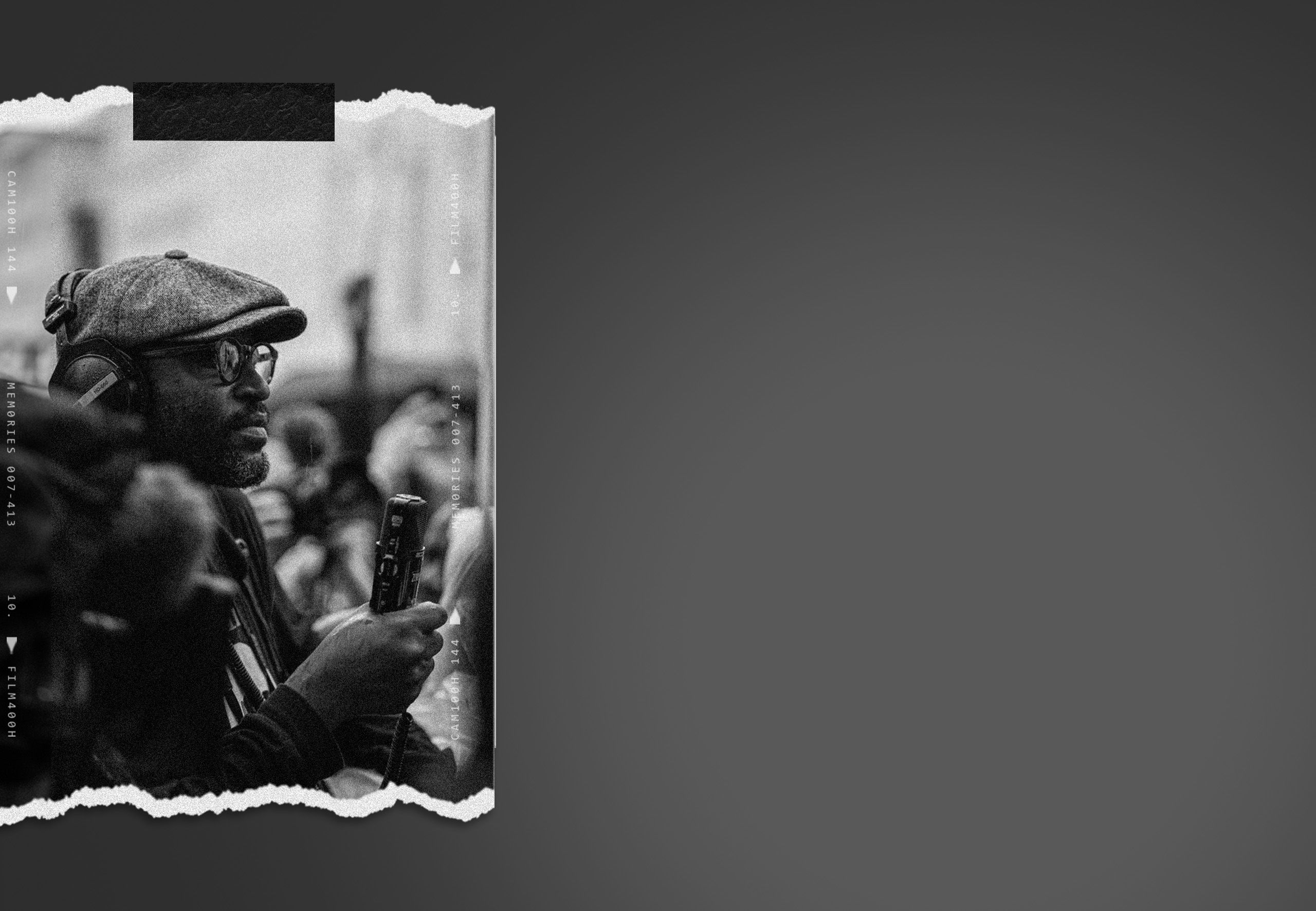


For decades, journalists have used investigative reporting to write stories on political corruption, crime, human rights abuses, and social justice issues.

Investigative journalism puts the spotlight on abuses of power, finding stories that are flying under the radar and sharing them in the public interest.
Yet cutting-edge twenty-first-century investigative journalism looks a little different than the watchdog journalism of old, such as when Washington Post reporters Bob Woodward and Carl Bernstein blew the lid off American politics while reporting the Watergate scandal.
No longer does the best investigative journalism only appear in broadsheet newspapers. News organisations have realised the power of digital storytelling, and some of the most impressive pieces of investigative journalism now contain interactive multimedia, comics, videos, maps, and photography to engage readers and bring pieces to life.
In this piece, we'll explore ten gripping examples of investigative journalism and discuss how new digital formats have impacted readers.


Investigative journalism is when reporters focus on a single specific issue that demands public accountability to create an in-depth news story or series of articles from interviews, satellite imagery, data, and historical media.
Some media outlets are specifically focussed around investigative journalism, like ProPublica. Other well-known news organisations like the Guardian and the New York Times have a history of watchdog journalism as part of their more holistic news output.
Unlike breaking news reporters, investigative journalists will usually spend weeks (or months) following up on leads and interviewing sources to piece together their article. Some information will already be in the public record, but needs attention to make sense in context. Other times, investigative journalists will invest significant time gaining the trust of their sources, so they feel safe and comfortable going on the record.
Published investigative journalism has the power to scrutinise powerful individuals, uncover secret scandals — and even, in the case of Watergate, force the resignation of the leader of the free world.
From the muckraker articles of McClure's Magazine around the turn of the twentieth century through to the Pulitzer Prize-winning journalism of the Washington Post’s Capitol Riot analysis, investigative journalism has a long history holding those with power to account.
✍️ Journalists: Ilya Barabanov and Nader Ibrahim
📰 News outlet: BBC
When a smashed tablet was found on a Libyan battlefield, BBC journalists got an exclusive insight into Wagner, one of the world’s most secretive mercenary groups.
Reporting for the BBC, investigative journalists Ilya Barabanov and Nader Ibrahim pored over the tablet to uncover information about the Russian mercenary group and its front-line fighting methods. The tablet contained equipment lists and military maps, which Barabanov and Ibrahim were able to corroborate with drone footage, location dots, and recent fighting around South Tripoli and other locations.
To show the tablet's importance, the BBC's story uses an embedded scrollytelling feature, so the reader can see how that data was used to verify locations and weaponry.
The investigation corroborated their reporting by collecting civilian testimony and open-source evidence. After months of research, the journalists were confident the tablet provided solid proof the Russian government supported the mercenary group. They also concluded that, despite a ceasefire, mercenary fighters were still in Libya and destabilising peace efforts.
On the back of Barabanov and Ibrahim’s reporting, a legal case was launched on behalf of a Syrian family of a murdered man, persuading Russia to investigate Wagner fighters in the region.
✍️ Journalist: Ángeles Vázquez
📰 News outlet: El Periodico
Los fogones de la Kitchen is a classic example of a journalist uncovering corruption associated with financial crime and political favours.
The story is a deep dive into the illegal operation to spy on the former treasurer of the PP, Luis Bárcenas, by bugging the home of former commissioner José Manuel Villarejo. Audio was discovered that contained information about reserve funds given to a "para-police" operation launched in 2013. The operation was used to find compromising documentation that former treasurer Luis Bárcenas could keep for the PP.
Thanks to Vázquez’s investigative reporting, several people involved in the scheme have already been charged, and Congress is currently creating an investigative commission to find who was involved— criminally and politically.
This story made our list because of how it immerses the reader in the investigation. Features like timeline illustrations and scrollytelling mean the reader can follow the investigation chronologically, and hand-drawn graphics bring to life text messages uncovered during the investigation.
✍️ Journalists: Matthew P. Funaiole, Joseph S. Bermudez Jr and Brian Hart
📰 News outlet: CSIS
Over many months, journalists for CSIS tracked China’s navy using aerial footage, financial data, and congressional research documents.
What they found was eye-opening: foreign companies are helping modernise China’s navy by spending billions of dollars on its shipbuilding industry. According to the report, the global shipping industry meets rising demand by having many of its newest hulls constructed in China. But container ships weren’t the only items being built there — warships were also on the construction line.
The investigative journalists step through why this is a genuine security concern for China's neighbour, Taiwan, and the implications that the lack of transparency at the shipyards has for other democracies like South Korea, Japan, and the United States.
To complement the article's aerial photography, CSIS also includes maps and graphs to help the reader visualise China's footprint on the global ship industry and understand where the construction is taking place.
✍️ Journalists: Tyler Kingkade
📰 News outlet: NBC News
In the 1970s and '80s, Bethesda's secretive Christian boarding home was responsible for at least 100 adoptions.
The problem was that nobody knew what was really going on at the home. Now, women are coming forward to tell their stories — stories of forced adoption, physical abuse, and psychological trauma. Thanks to investigative reporting by Tyler Kingkade, some are being reunited with their children.
Kingkade uncovered that families paid a $250 "love gift" to the boarding home to receive a child.
This fee was paid by the family who took Nancy Womac's baby. Nancy was reunited with her for the first time in 2021, and used the NBC story to tell her story.
Womac meeting her daughter Melanie Spencer in 2021
The reporting uses historical photographs, aerial maps, and newspaper clippings to explore how the boarding home was perceived during the '70s and '80s. Later, recreated text messages bring Nancy's story forward to the present, helping the reader understand what it was like when she and her daughter first communicated with each other.
✍️ Journalist: Timo Kollbrunner
📰 News outlet: Public Eye
In this investigative journalism report for Public Eye, Timo Kollbrunner takes a detailed look at fast-fashion giant Shein's impact on workers.
The reporting took Kollbrunner to an area in Guangzhou, where thousands of Chinese workers spend up to twelve hours a day sewing clothes for the online store. His discoveries were bleak: employees work from 8am until 10.30pm, with two 1.5 hour breaks. They work after dinner six days a week and get just one day off each month.
Seamstresses regularly work 75+ hour weeks with one day off a month
Through interviews with several employees and undercover agents, Kollbrunner also discovered that the factories that employed seamstresses didn't issue contracts, pay social security contributions, or comply with basic safety standards.
The investigative report has led to greater scrutiny of the company, its practices and honesty around its suppliers and code of conduct.
Last year, Radio NZ produced and released a 6-part mini-series about spies around the world.
The Service looks at the inner workings of spy agencies like SIS, the KGB, and MI6, providing an insight into the underside of national security. Through first-hand interviews with John Daniell (whose mother had been a spy), the mini-series looks at famous events like a joint SIS/MI6 raid on the Czechoslovakian Embassy in Wellington and details how Cold War spies and the Five Eyes intelligence alliance impacted the operation.
Unlike the other stories on our list, The Service is presented as a podcast. Each episode is broken down into sixty-minute chunks, so listeners can follow the story at their own pace, from the moment Daniell's mum tells him she used to work for the SIS to the night of the Czechoslovakian Embassy raid.
✍️ Journalists: Eugene Bingham and Paula Penfold
📰 News outlet: Stuff
This Stuff Circuit example of environmental journalism spent months looking into modern-day slavery in the fishing industry.
Through interviews with fishermen, private investigators, global fishing organisations, and agencies like Greenpeace and the Taiwanese Fisheries Agency, Eugene Bingham and Paula Penfold uncovered the shocking conditions that some workers were forced to endure.
The investigation started with the tuna industry, where one Indonesian fisherman says he was promised $300 a month to work. After four months of hard work on the boat, the fisherman simply wasn't paid — a common occurrence, according to campaigners.
The report also looks at companies that import, wholesale or retail tuna, and how much effort is being put into ensuring the fish they're selling isn't connected to slavery.
Along with twenty minutes worth of in-depth interviews, Caught also includes undercover footage from fishing boats. The visual evidence of crew mistreatment drives home the gravity of the situation.
✍️ Journalists: Victoria Elms and Kieran Devine, Carmen Aguilar Garcia, Larissa Johnsson, and Marcia Reverdosa
📰 News outlet: Sky News
The team at Sky News analysed data from a satellite monitoring system to track alarming deforestation patterns in the Brazilian Amazon.
The report, Amazon Alert, used satellite system alerts to detect changes in the forest canopy. Their findings? The amount of land at risk of deforestation had risen by 16% in a single year, increasing substantially since President Jair Bolsonaro took control of the government in 2019.
The investigation also found that those responsible for industrial-scale deforestation in the region were often local politicians and business people, who rarely paid fines for clearing the land.
Using scrollytelling maps and satellite images of damaged protected regions, Sky News’ report made the extent of deforestation clear.
✍️ Journalists: Josh Baker
📰 News outlet: BBC
When Sam Sally left Chicago in early 2015, she told her family and friends she was starting a new life in Morocco. However, she ended up in Raqqa — a city controlled by ISIS.
Sally claimed she was tortured and held hostage: journalist Josh Baker investigated whether this was true, or whether Sally lied to protect herself. The story follows Sally’s journey to Raqqa, alongside Baker’s attempts to find her. Alongside the narrative is in-depth reporting into what drove Sally and her husband from Texas to an ISIS stronghold.
Archival video and photography are used to describe Sally's life in Syria, complementing in-person interviews. The investigative report was eventually repurposed into a podcast and a documentary for BBC's Panorama.
✍️ Journalists: Ian Urbina
📰 News outlet: NBC News
Reporter Ian Urbina discovered China's use of industrial boats to illegally fish in waters belonging to North Korea. In turn, this illicit fishing has decimated North Korea's squid stocks by more than 70%.
Alongside data scientists at Global Fishing Watch, the report found China has violated UN sanctions, and that captains act illegally by turning off transponders to make their vessels invisible to authorities.
The report leaned on satellite imagery, graphs, and photographs of vessels to tell its story. The use of multimedia scrollytelling allowed Urbina to detail the growing number of Chinese ships in North Korean waters, with infrared imaging backing up his claims.
These stories highlight the crucial role investigative journalism continues to play.
While most of us aren’t reading 10,000-word articles in broadsheets anymore, investigative journalists have adapted to more immersive storytelling modes. Now, journalists can include detailed images, maps, aerial photography, and other multimedia assets to build a timeline and support their story with immersive evidence.
The result? A more engaging form of storytelling, helping investigative journalists add detail and interactivity to these crucial stories.
The best part is, with tools like Shorthand, investigative journalists can create engaging reports without hiring expensive designers or learning to code.
Feeling inspired to create engaging investigative journalism pieces? Shorthand helps publishers create digital stories and interactive articles to make content more impactful. See how sites like the BBC, Business Insider and UNICEF create engaging content for their readers and try it for yourself — and publish your first story free!